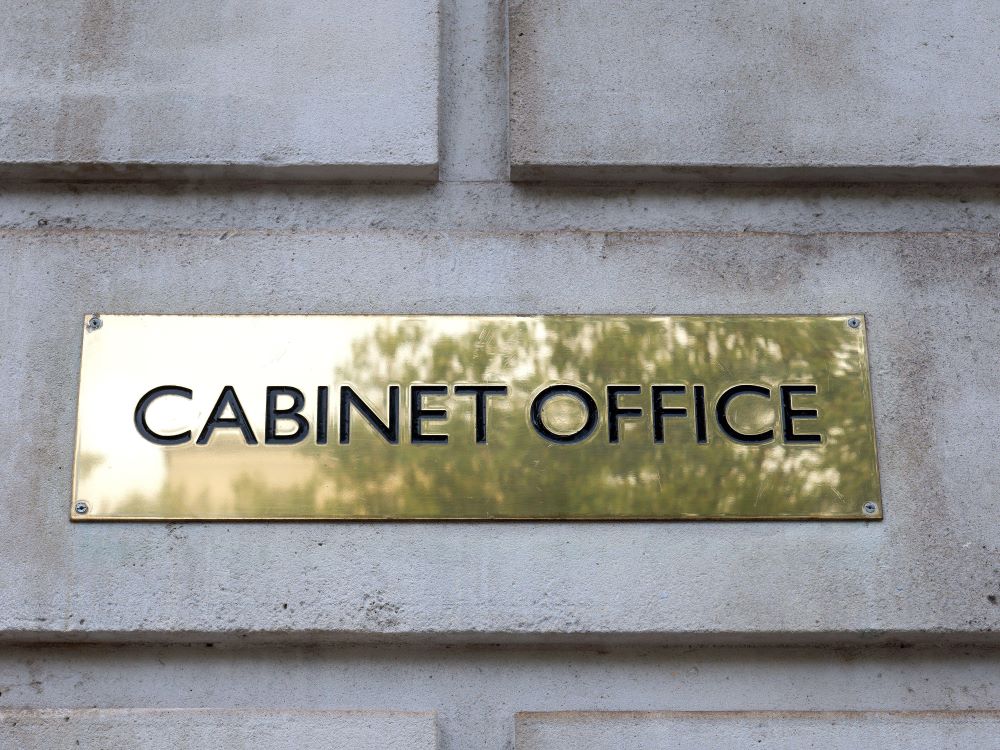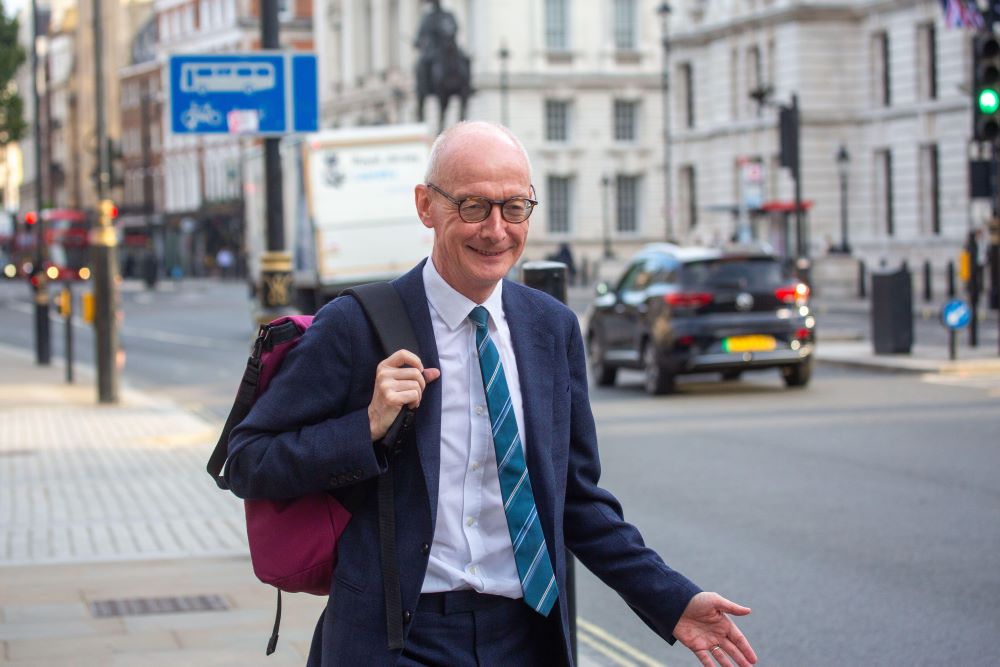Keir Starmer Has Promised Long-Term Missions. Can He Achieve Them?
7 min read
Keir Starmer promised to replace short-term, knee-jerk policymaking with long-term strategy. How will he go about achieving this aim? Chaminda Jayanetti reports
Labour came to power promising to do things differently to the chaos of the preceding years – unity rather than division, cleanliness over corruption, honesty in place of obfuscation.
It’s not clear much of that has survived Keir Starmer’s first four months in office, but one Labour agenda has so far taken less of a battering – its pledge to replace short-term lurching with long-term strategy.
Central to that are Labour’s five ‘missions’ – long-term agendas designed to cut across Whitehall’s stifling departmental silos.
“For too long, Britain has been held back by governments that, because they lack a relentless focus on long-term ends, are buffeted about by events,” Labour’s 2024 manifesto said.
It wasn’t a lonely voice. In a report published shortly before the general election, the House of Commons Liaison Committee warned: “It is clear that the centre of government is not executing its most important function: to set, direct and ensure delivery of cross-government national strategy in support of the Cabinet’s priorities.”
But while Labour’s talk of long-term strategy hasn’t yet been undermined by frontpage headlines, sceptical voices aren’t hard to find.
“They haven’t defined some of these missions, they don’t have a definition behind them,” says former government adviser Sam Freedman, whose recent book Failed State bemoaned Whitehall and Westminster’s inability to think and act strategically. “Like, what’s the opportunity mission? What are they trying to do? Nobody knows.”
Labour’s manifesto listed its five missions as:
growth – the highest sustained growth in the G7
energy – zero-carbon electricity by 2030, accelerating to net-zero
crime – halving serious violent crime
opportunity – reforming childcare and education to make sure there is no class ceiling
NHS – there when people need it, with fewer lives lost to the biggest killers, and people living well for longer
There’s a clear difference between better-defined missions such as energy, and the vaguer statements that so far constitute the opportunity and NHS missions. The energy mission benefits from an unusually decent inheritance from the outgoing government, a secretary of state who has held the job before, and greater certainty over available budgets. Chris Stark, former head of the Climate Change Committee, has already been drafted in to lead a ‘control centre’ for the energy mission.

Other ‘mission boards’ will have to generate momentum from a standing start. Some are wrestling with a terrible inheritance.
“It’s not like the NHS, where you’ve got this completely messed up system that has been Andrew Lansley-ed into despair,” says Freedman. “What’s a health mission when there’s so many problems across this whole system?”
Ravi Gurumurthy is chief executive of “innovation agency” Nesta, before which he had extensive experience in strategic public sector roles under both Labour and the Tories, culminating in a three-year stint as director of strategy at the Department of Energy and Climate Change.
“If they’re going to do it well, you’ve got to review all the evidence, identify what the causal links are between your inputs and your outputs, and really test your assumptions pretty hard,” he says.
“If you think about what is a typical government strategy over the last 20 or 30 years, you end up with a lofty, abstract goal, and then you end up with a list of initiatives that vaguely relate to that goal. And it’s not really clear to see how those initiatives relate to the outcomes you’re trying to achieve; but critically, there’s almost no quantification of the impact.”
He says the mission boards must analyse the effects of individual measures before determining the best combination of measures needed to achieve their aims – rather like combining specific doses of different medicines.
“All the missions are very big, and they all need disaggregating into constituent parts. It’s quite helpful to have an overarching goal that then allows you to adjudicate between how much effort you place in different elements. So for instance, if the mission is reducing carbon, net-zero, then you can start to think what’s the cheapest, best and easiest way to reduce carbon in different sectors.”
One of the purported benefits of mission boards is that they cross-cut between departments, breaking the silo effect associated with Whitehall. Another is that they take a longer view than the weekly news grid, enabling them to focus on incremental steps to achieve long-term strategic goals.
In Failed State, Freedman argues that the high point of British governmental strategic thinking was under Tony Blair, whose Strategy Unit conceptualised subsequent reforms in health and education among other policy areas. A key aspect of the Strategy Unit – and its brethren the Policy Unit and Delivery Unit – was that it had the prime minister’s personal backing and involvement.
The Cabinet Office maintains that the mission boards are a personal priority for Starmer, with him chairing “regular” stocktakes – his first stocktake of the clean energy mission came in early October.
But while just after the general election Starmer said he would be chairing the mission delivery boards “to make sure that it’s clear to everyone that they are my priority in government”, as it turns out he won’t chair any of them. Each mission board will be chaired by the most relevant Cabinet minister, with Pat McFadden, the influential Chancellor of the Duchy of Lancaster, as deputy chair.
 Chancellor of the Duchy of Lancaster Pat McFadden (Alamy)
Chancellor of the Duchy of Lancaster Pat McFadden (Alamy)
“There’s a lot of paper flying around talking about missions within Whitehall,” Freedman says, “but no one really knows if this is what the Prime Minister himself actually wants – or the Chancellor herself actually wants – and if people don’t believe it’s really coming from him, they won’t feel it’s actually important, because ultimately all sanction in our system comes from him.
“Departments are going to be naturally suspicious of mission boards because it would involve giving up a bit of power, which they don’t like doing. So it looks to me like a version of a Cabinet committee. It’s not what drives Whitehall.”
And then there’s the biggest question of all – will it drive the Treasury?
“The relative strength of the Treasury… distorts decision making across government,” the Institute for Government said in a report published this spring, “and its relationships with other departments can be dysfunctional, reinforcing silos through a budget setting process that makes it harder to tackle the cross-cutting and long-term problems facing the country”.
Blair’s Strategy Unit benefited from having a chancellor who had a broad policy agenda and was willing to flex his deliberately flexible fiscal rules to achieve it.
By contrast, Rachel Reeves’ fiscal rules are tighter, amid weak public finances and higher media scrutiny – and her focus is on the purse strings, not policy.
“The standard model that [the Treasury] uses of having a scorecard for a spending review which is driven by fiscal rules... means that they’re inevitably driven by short-term thinking,” Freedman says. “It needs No 10 to play a role in applying other strategic tests to how a spending review is going to work.”
Gurumurthy is optimistic that some missions will need less Treasury backing – the clean energy mission will rely more on private sector investment. But others will need the government to cough up.
“Where I think it’s more difficult is in things like education, some parts of the health mission, particularly the NHS ones, and crime, where you do need funding,” he says. “One of the ways through this is to try to quickly find cashable savings in crisis expenditure. So, can you get reductions in the amount we’re spending on diabetes by reducing obesity? If you can start to quickly identify some of those cashable savings and then recycle them into prevention, that may be a way through the fiscal constraints.”
Next spring’s three-year spending review will be pivotal. The Cabinet Office says McFadden will work with Reeves’ effective deputy Darren Jones to build a new approach to spending reviews, with departments bidding for money based on how they deliver against the cross-government missions.
But even if the Treasury can be made to budge, so far most of the missions are too ill-defined for there to be clarity on what money might be needed.
“Every department is writing to the Treasury saying, ‘you can’t cut us because we’re critical for all of your missions’,” says Freedman.
“But as every department can say that because they haven’t been defined yet, it doesn’t really get you anywhere. So you just end up going around in a circle.”
